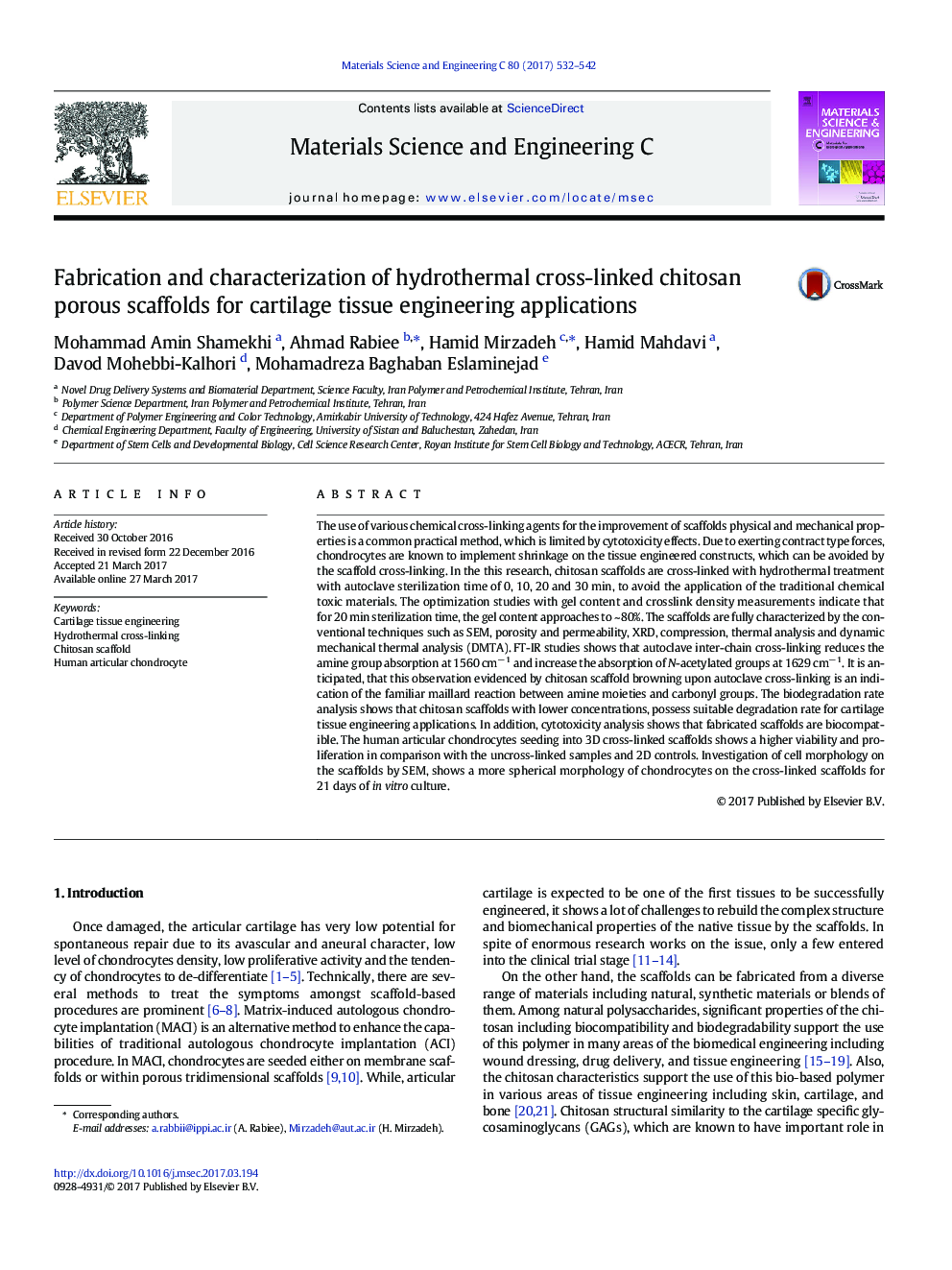| کد مقاله | کد نشریه | سال انتشار | مقاله انگلیسی | نسخه تمام متن |
|---|---|---|---|---|
| 5434349 | 1509141 | 2017 | 11 صفحه PDF | دانلود رایگان |
The use of various chemical cross-linking agents for the improvement of scaffolds physical and mechanical properties is a common practical method, which is limited by cytotoxicity effects. Due to exerting contract type forces, chondrocytes are known to implement shrinkage on the tissue engineered constructs, which can be avoided by the scaffold cross-linking. In the this research, chitosan scaffolds are cross-linked with hydrothermal treatment with autoclave sterilization time of 0, 10, 20 and 30 min, to avoid the application of the traditional chemical toxic materials. The optimization studies with gel content and crosslink density measurements indicate that for 20 min sterilization time, the gel content approaches to ~ 80%. The scaffolds are fully characterized by the conventional techniques such as SEM, porosity and permeability, XRD, compression, thermal analysis and dynamic mechanical thermal analysis (DMTA). FT-IR studies shows that autoclave inter-chain cross-linking reduces the amine group absorption at 1560 cmâ 1 and increase the absorption of N-acetylated groups at 1629 cmâ 1. It is anticipated, that this observation evidenced by chitosan scaffold browning upon autoclave cross-linking is an indication of the familiar maillard reaction between amine moieties and carbonyl groups. The biodegradation rate analysis shows that chitosan scaffolds with lower concentrations, possess suitable degradation rate for cartilage tissue engineering applications. In addition, cytotoxicity analysis shows that fabricated scaffolds are biocompatible. The human articular chondrocytes seeding into 3D cross-linked scaffolds shows a higher viability and proliferation in comparison with the uncross-linked samples and 2D controls. Investigation of cell morphology on the scaffolds by SEM, shows a more spherical morphology of chondrocytes on the cross-linked scaffolds for 21 days of in vitro culture.
Journal: Materials Science and Engineering: C - Volume 80, 1 November 2017, Pages 532-542
